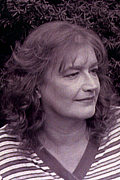By
 One of the most memorable community events I ever witnessed in Cambridge was when Martha and the Vandellas came to town. There was no particular occasion being celebrated, as far as I can recall. Somebody just decided that it would be nice if…Martha and the Vandellas came to town.
One of the most memorable community events I ever witnessed in Cambridge was when Martha and the Vandellas came to town. There was no particular occasion being celebrated, as far as I can recall. Somebody just decided that it would be nice if…Martha and the Vandellas came to town.
The event was held outside the Cambridgeside Galleria, a multi-story shopping mall on First Street near the west bank of the Charles River. Before the north entrance to the Galleria was a sort of plaza. In the center was a pool connected by a canal to the Charles. The pool had a fountain that shot water fifty feet into the air and, on windy days, showered everyone on the plaza with a spray of fetid brown droplets. (Remember that song about the Charles River by the Standells: Dirty Water? They killed it with that number.)
That evening—it was in late summer—the fountain had been turned off for the event. In the middle of the pool floated a little boat like one of the excursion craft that plowed up and down the Charles. A ramp had been placed from the edge of the fountain to the boat.
The concert was to begin at seven, but people started gathering for it at five. The ages represented ranged pretty much from Pampers to Depends. Four generations of family groups showed up with coolers, picnic baskets, and lawn furniture. A few cops appeared to maintain crowd control. I saw one I knew and said hello to him. “I remember when Martha and the Vandellas were a new group,” he said.
A little after seven I was perched on a railing surrounding the pool, watching some grubby-looking ducks paddle around in the opaque water. I heard a stir behind me, and the crowd broke into a ripple of applause that became a wave. I turned. Three women in iridescent cocktail dresses and baroquely curlicued wigs scampered daintily down the ramp to the boat. They were Martha and the Vandellas, of course, still looking very good.
They did some of their own numbers—Nowhere to Run and Heat Wave—and covered some Supremes and Temptations hits. A few people rose and bopped to the music. As the concert progressed, the energy in the audience seemed to transform itself into a kind of driving expectation. People began leaning forward in their seats with anticipation. I knew what they were waiting for; I was waiting for it myself.
The singers vamped around for a bit before they did it. Then the notes of the signature saxophone introduction echoed around the plaza. The crowd roared in response. (There’s no other word to describe the sound it made.) En masse, several hundred people rose from their lawn chairs and began…Dancing in the Street.
Grandmothers in their mid-seventies capered with their teenaged grandchildren. Toddlers cavorted. Those who were adolescents when the song was Number One on the charts danced the dances of 1965. The cop I knew looked as if he was mightily restraining himself from joining them.
I looked more closely at the faces nearest me. Each one was effulgent with something. Joy? Exuberance? Plain old happiness? All I could think of was the William Butler Yeats line about the dancer and the dance.
The moment lasted longer than the song. Martha and the Vandellas took their bows. Something stronger than the setting sun cast a communal glow over the audience as its members began folding up lawn chairs, re-packing picnic baskets, and collecting their children.
It was the night everyone in East Cambridge smiled.


